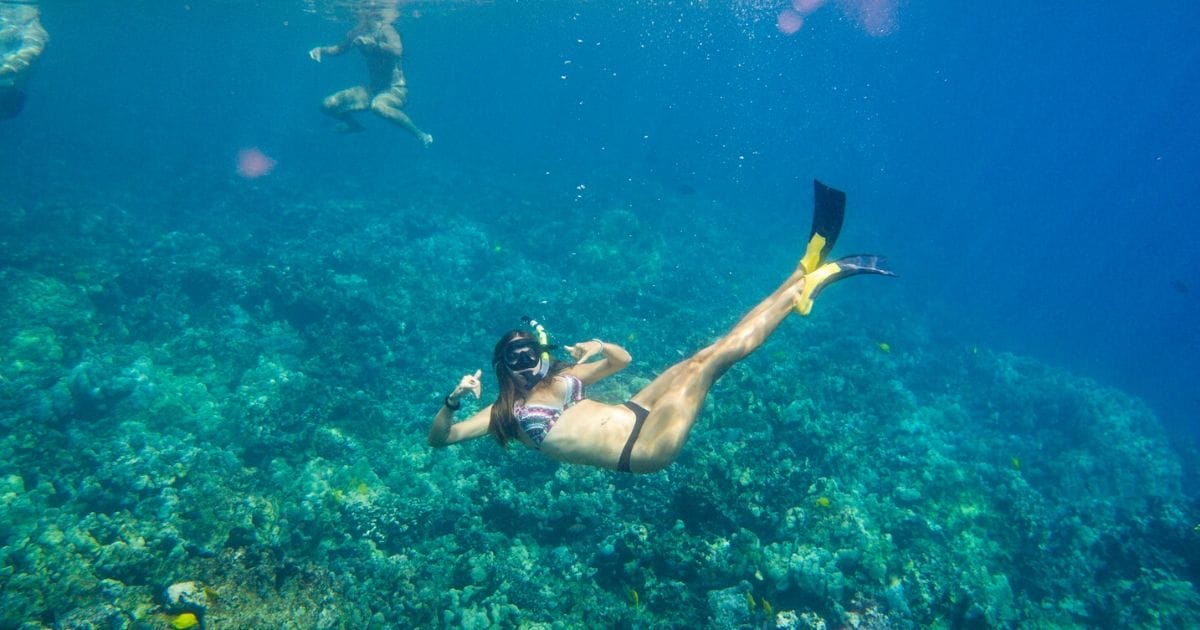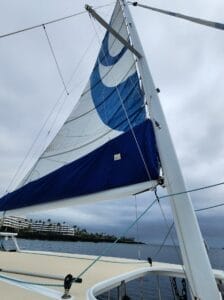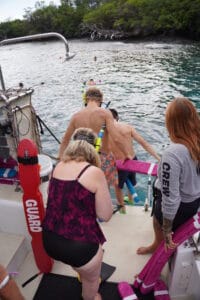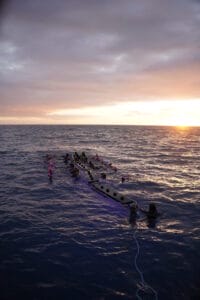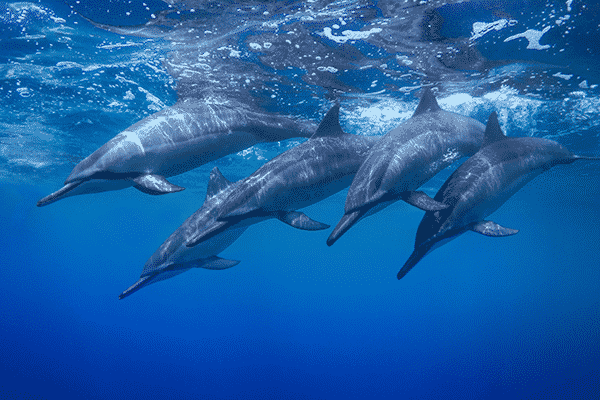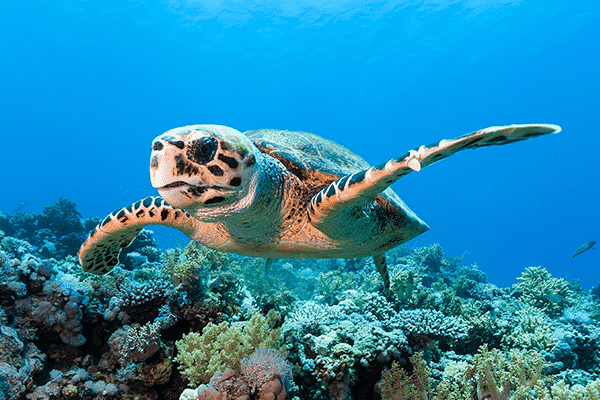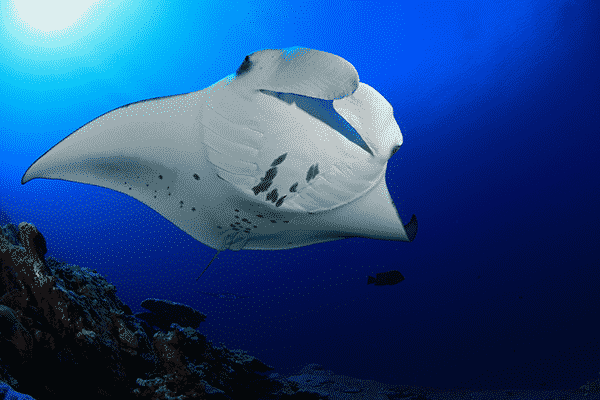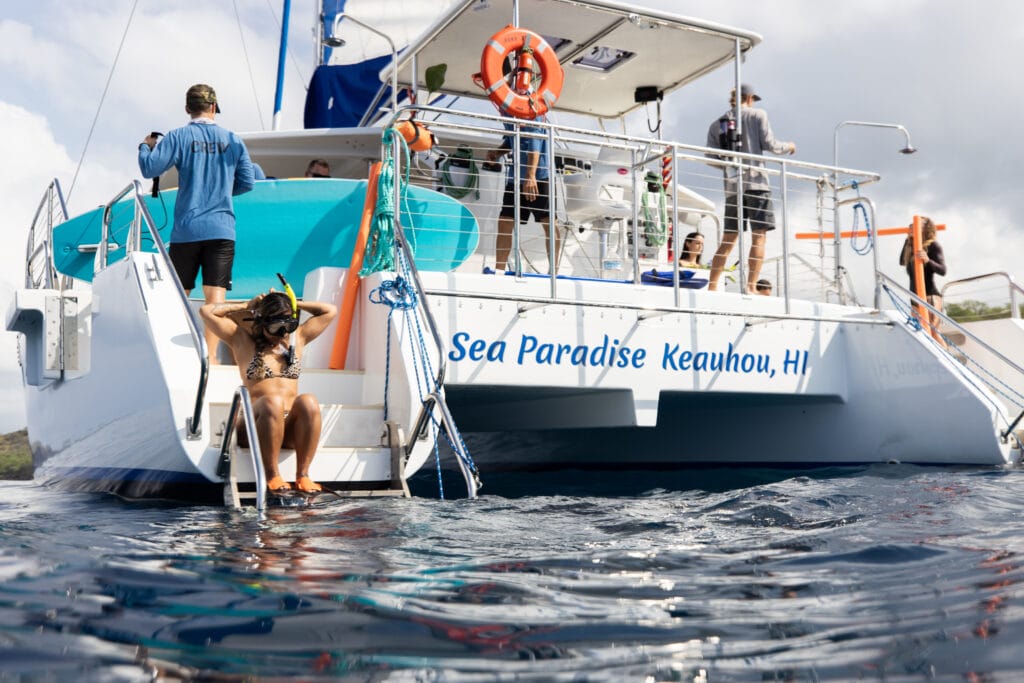Many folks use fins for fun water activities. Admin discusses the pros and cons of using fins for Snorkel Planet. Sea Paradise is the best way to snorkel on the Big Island regardless of whether or not you choose to use fins.
Quick Summary
The short answer to this question is: No, you don’t really need fins for snorkeling. However, they have a few big advantages that will make your snorkel experience a whole lot better.
It’s perfectly fine to go snorkeling without fins as long as you make sure you stay safe. Oceans with calm waters (no or limited currents) should be enjoyable without wearing them. Stay close to the beach, swim in shallow water and most likely you’ll be just fine.
On the other hand, there definitely are a good amount of reasons to get a pair. Whether it’s renting or buying. Take a couple of minutes to understand all the details as we explain everything you need to know.
In this article we will cover the following topics:
- The advantages and disadvantages of fins
- The different types of fins
- Best bank for your buck
- Best Snorkel Fins For Wide Feet
- Are short fins good for snorkeling?
- Conclusion
Advantages Of Fins
Let’s first take a look at the advantages that fins will bring to your snorkel adventure. Some of them might sound obvious to you, so feel free to just scroll to the paragraph that helps you out the most.
Flexibility And Speed
View fins as an extension of your feet. Just like fish, their tail fin makes them head from one direction to the other in a split second. Now even though we snorkelers are slower swimmers, fins can assist us big time when it comes to making turns.
Another advantage, and this is probably one of the biggest ones, is that they allow for faster movements in the water. Not only sideways, but also forward. Fins speed up your underwater exploration, allowing you to see more within the same amount of time.
Current Control
Like we mentioned at the beginning of this discussion, currents are another great example why you might want to consider fins. Slow currents usually won’t be a big deal. Unfortunately currents can suddenly change, especially when you prefer to snorkel close to the reefs.
Fins provide better control whenever you experience an ocean current. Even though they can still slow you down or push you in a certain direction, their help is bigger than you might think. You have more power which in return provides a force against the movement of the ocean.
Obviously there are limits when it comes to your own strength, and not every current can be beaten simply by putting on a pair of fins. However, please remember that snorkeling under “heavy” weather conditions must be avoided in the first place. Some useful information can be found in our discussion about snorkeling in the rain. We talk loads of weather conditions there.
Health And Energy
We covered this topic once before in our article about snorkel scooters. Physical limitations or any health issues could limit us in our muscles or overall condition. If you’re not able to swim for a long time for whatever reason, yes, fins could make the best out of the limited snorkel time you have.
They also save your energy. If you get tired quickly, why not give them a go. You will notice how they require less “flipper” movements to move in a certain direction. Chances are you’ll be able to enjoy snorkeling for a longer period of time than you normally would. Which brings us to the next point.
Snorkel Duration And Distance
To continue on the energy saving aspect of fins, and how they allow for longer swimming, let’s talk distance. Not always, but often, your snorkel distance says something about the amount and diversity of the marine life you could be encountering. For example, let’s say you would love to finally snorkel with that giant sea turtle you heard about, why not increase your chances of actually meeting one.
The problem about distance though, is that you probably need to walk back to where you started. So don’t spill all your energy and make sure you have enough resources left to return to your towel, family or whatever it is. It might sound obvious, but if you experience problems to move around, never get overexcited.
Floating And Diving
Just like life jackets or snorkel rash guards, fins usually float. In other words, if you put them on they will lift up your feet. You’ll be floating in a more horizontal position which is exactly what you want. Especially in shallow water with a rocky ocean floor. It even speeds you up if you move horizontally reduces your risks of hurting yourself.
If you’re able to dive down a little because there seems to be an interesting fish species, wearing fins will help you out big time. We can’t hold our breaths too long, and we definitely should never go beyond our personal limits. So if you only have a few seconds to explore the underwater world, why not use a little extra power. It definitely adds to the excitement and makes you feel like a fish in the water. For snorkelers who use underwater metal detectors, fins can make a huge difference when discovering new treasures.
Protection
Anything that covers your feet serves as a layer of protection. It could be water shoes, neoprene socks or just as well fins. Whenever you enter the ocean, you never know what’s down there. Rocks, glass, fish, you name it. In order to avoid any injuries, it’s always a good idea to cover your feet.
The same goes for snorkeling. You can easily hurt yourself if you snorkel close to a reef or a rocky wall. And if you decide to stand up for a moment to catch your breath, well, you never know what you could be standing on. Therefore, wearing fins is not a bad idea at all.
Fins do also (to a certain extent) protect your feet from sunburns.
Safety
Besides protecting your feet from injuries, how about emergencies. In case you find yourself in some kind of trouble and you want to head back to the beach as fast as possible, fins are more than just a luxury. Danger could suddenly appear, like a storm or a group of jellyfish. Heaving back quickly is probably what you decide to do.
Another thing that adds to their safety is the possibility to choose a bright color. Just like safety flags or neon life vests, wearing something shiny makes you more appealing in the water. In case of any emergency, the life guards on duty could spot you more easily. Even though they are available in black and blue, for this reason you could consider to get a pair in bright yellow or pink. Maybe a matching color with your mask or possibly full face snorkel mask would be one way to go.
Exploration And Photography
To get back to underwater exploration and taking a short dive, it’s probably obvious by now that fins provide a lot more opportunities. She fish prefer to stay at the ocean floor, and some interesting corals might be down there as well. A quick visit is much easier with fins like we already explained.
If you’re like us and you enjoy to do some underwater photography, moving from one place to the next in a short period of time comes in handy. We’re not saying that you should chase any fish, but fins can definitely get you closer to them in a short amount of time. Taking pictures underwater (or who knows even videos) can be a good laugh to watch afterwards. If you’re interested, feel free to check out our extensive guide about snorkeling with a GoPro.
Snorkel Excursions
Most of the snorkel locations we mention on our website offer one or multiple excursions that you can join. Usually they take you out on a boat to some of the best places to explore. Sometimes they take you to an island, but quite often they anchor somewhere at sea. You enter the water from the boat and when you’re finished you get back on board.
Some people find it exhausting when the water is too deep and they’re not able to take a break. If there is no sandbank or beach nearby, you could end up snorkeling for quite a while. Therefore, if you want to join one of these adventures but your condition is limited, try on some fins. Spending less energy often results in longer snorkel excitement.
Disadvantages Of Fins
Bulkiness And Transportation
Fins come in all sorts and sizes, from extremely small to large and bulky. If you decide to wear a large pair, be prepared for a little hassle here and there. The more space you need for snorkeling, the higher your chance of touching objects. For instance, you want to avoid touching any coral. Damaging nature could have an impact on the ecosystem. Besides that, coral is already gone in some places. Let’s try to avoid that.
Bringing fins on a holiday or simply to the beach requires transportation. We once wrote an article about bringing snorkel gear on a plane. If you have enough space in your suitcase there’s probably nothing to worry about. But how about hand luggage? And how about carrying your gear with you every day whilst on vacation? Not every resort offers beach carts to their customers. Things to take into consideration before buying any fins. Who knows renting is a better choice in certain situations.
Accidents
Hand in hand with bulkiness comes a possible accident. Some spots can be crowded with other snorkelers, especially if you join an excursion. Keeping your distance might sound simple, but since we’re usually staring down we could forget about other people. It’s not an exception when you hear people say how they got hurt by the fins of someone else.
People can suddenly start to panic whenever they are frightened. The question to ask ourselves is whether or not people who are scared to snorkel should wear fins at all. If this is you, it’s probably best to first practice without fins in shallow water or a swimming pool. Once you feel more comfortable it could be a good idea to expand your gear.
Investment
There are fins for almost every budget. However, if you want to buy a decent pair, you probably end up spending somewhere between 50 and 250 bucks. In other words, if you snorkel occasionally or maybe even just once, they’re probably not the best investment. Yes, renting could work much better in that case.
Buying a bunch of snorkel gear at once can quickly add up to a big sum of money. Everyone’s budget is different and we all have different expectations when going on a snorkel trip. Just keep in mind that you can still buy a pair after trying them first. Maybe you can borrow them from someone that has the same foot size? Something to think about.
Keep in mind that cleaning snorkel gear is very important. If you clean your new equipment regularly, you should be able to enjoy it for a long time.
Proper Sizing
In our opinion it’s always best to buy your gear in a shop. If there’s one in your area, why not pay them a visit. They should be able to give you some good advise. By simply ordering fins online you’re not able to try them on. Sure, you could return them, but if you want them fast that won’t do the trick.
In case you do decide to get some from an online shop, make sure to search for their “fit”. Lots of sellers offer this specification based on other people’s feedback. That way you don’t have to scroll through all the comments (even though that’s always a good thing to do).
Anyways, the problem is that quite some people experience pain whenever their size is off. Even if it’s just a little bit. Just like shoes, you want the ideal fit. Finding them for fins is not as easy as you might think.
Kids
Kids love gadgets, at least most of them in our opinion. So yes, chances are they’d love some fins for their next holiday. We covered this topic once before in our giant guide for snorkeling with kids. Since they are still in the process of growing up, can you afford to buy them a new pair every now and then? Maybe you should go for a pair that’s adjustable in size?
The problem with kids could be their excitement. They like to play around and enjoy every wave or fish they come across. Unfortunately it happens all the time that kids hurt other people who are simply enjoying a quiet swim. Since they are not used to wear fins, they might forget about how big they actually are. So, if you buy them a pair, make sure they use them wisely.
Snorkel Stops
Another disadvantage is taking a break. Let’s say you snorkel towards that reef and you feel like taking a short break. There’s a rocky spot to hang out and enjoy the view. However, what about your fins? Yes, you can take them off whilst you’re in the water, but will you manage? You might be thinking “If only my fins were water shoes right now”.
Or how about a sandbank. You finally made it and now you want to take a walk. Yes, you need to carry your fins with you. But that’s not the only thing. You have your mask, your snorkel, possibly a waterproof bag or case, who knows even a life vest you feel like taking off. Can you carry all these things with you? You probably figure out something, we’re just saying.
Different Types Of Fins
Since this is quite an extensive review, let’s share a video that explains everything you need to know in about 5 minutes. Or if you prefer, just continue reading.
Closed “Classic” Fins
In case you didn’t prefer to watch the above video, closed fins are the “typical” kind. They fit you just like a shoe but without the laces. Therefore you must be pretty selective and careful when you choose your size.
A little elasticity allows you to put them on. Just make sure they don’t feel too loose. Too tight is not good either. What you can do is stand up, lift your foot and wiggle it around a little. If your foot moves too much inside the fin, try a smaller size.
Open Heel Fins
These fins are more easy to put on and they are tightened by using a heel strap. This means that you put your foot inside the fin and then tighten the strap to your personal preference. There are a couple of variations to this mechanism but we think you get the point.
You can wear them both barefoot or with socks/shoes. If you decide for the latter then it’s probably best to go for some neoprene socks (if you’re not allergic) or even some water shoes. Socks or shoes have the advantage that they keep your feet warm. If you snorkel in a chilly ocean, maybe this is just the tip you’ve been looking for.
Elastic Bungee Fins
In a way these are quite similar to the open heel fins we just talked about. They’re pretty much the same besides the fact that they come with sort of an “elastic” strap. In stead of tightening the strap manually, you simply use it’s elasticity for a perfect fit.
Compare it with an elastic that tightens around your heel. You pull it backwards, position your foot inside the fin, and then slowly release the tension. Definitely a time saver, or maybe it sounds more convenient to you personally.
Hinged Fins
These fins look like the closed fins we started with. However, they have a hinge between the foot and the fin area. This enables the blade to be more flexible and bend whenever you try to propel yourself.
One of their main advantages is speeding you up. You could say that the fin is moving up and down in a more efficient way, allowing you to really take up some speed.
Was That All To Know About?
Unfortunately not. Or should we say fortunately. We’re trying to keep this as simple as possible for you. Just give us a moment to tell you about one last variation you could stumble upon. After that you should really understand which fins suit you best.
Paddle Or Split Fins?
Paddle Fins
As if all of the above isn’t quite enough, let’s explain the two variations you could come across when it comes to the design. In most cases you will see people using so called “paddle fins”, just like you would paddle a boat. The blade is pretty flexible and consist of 1 (often closed) surface.
Paddle fins are meant to move you forward as soon as you start to make your propulsion movements. These movements are a combination of using your hips and knees. Because of the big surface you will be moving forward both quickly and continuously.
They also respond quickly. In other words, if you decide to suddenly move to the left, their big surface will do exactly what you want. Some people are trained to use certain leg positions that allow them to maneuver. If this is you, stick with this type.
Split Fins
These fins look pretty much the same as the paddle fins, however, they have a split in the middle dividing them into 2. Towards the center they become more flexible. They way they serve as a kind of “propeller” so to speak, just like an airplane.
Since water can run through the middle, there is less resistance when you move your feet. On the downside this means that your acceleration won’t be as high as with paddle fins. Their advantage is that once you’re steadily moving they will save you energy. The propeller partially does the work for you.
In case you experience problems with your hips, you might discover that you have a lot of quick kicks produced solitarily by your legs. Split fins respond better to these movements. Not only because there is less resistance, but also because you don’t feel this resistance as much.
In Other Words
If you have no mobility issues, maybe just stick with the paddle fins. They will do the trick for both occasional and regular snorkeling. You’ll be able to turn left and right but you’ll feel the resistance.
In case you have problems with moving your hips, or if you’re used to kick your feet around when snorkeling, consider to get the split fins. They save your energy but take more time to get you to full speed.
Best Bank For Your Buck
Please keep in mind that this is just one out of hundreds of items out there! When selecting the best bank for your buck we took the following into account:
- Their fit comes extremely close to your foot size
- Flexible foot pocket that adjusts according to your size
- Minimal weight for transportation
- Bright colors (even though you can select a different one)
- Extremely responsive for acceleration and direction
- Easy for beginners
- Price range: $15.00 – $50.00 (depending on color and size)
- Cressi is a well established manufacturer (Cressi.com)
- If you prefer to wear open heel fins, maybe even combined with snorkel socks or shoes, make sure to scroll through some of the comments that people left behind.
- We never tried split fins, which means it’s probably best to do a little more research on Youtube or in some of the forums. There’s always someone who’s able to help you out.
Best Snorkel Fins For Wide Feet
These days, wide feet are very common. And with wide we mean “E width” or greater. If this is you, don’t worry. There are fins that will fit you just fine.
Our first suggestion would be to go for an open heel fin. Some of them come with a wider foot pocket. Unfortunately this doesn’t guarantee a perfect fit, especially since one foot is wider than the other.
You might be wondering how well they will fit you personally, and yes that’s a good question. Here are a few ways to get around this issue:
- Read comments/reviews (yes, some people talk foot size)
- Wear water socks if they are just a little too wide
- Wear water shoes if socks aren’t enough
One of the downsides is the price of these fins. They cost around $90.00.
Tip: It’s probably best to buy snorkel fins for wide feet from a local snorkel shop. If you order them online, you might end up returning the product.
Are Short Fins Good For Snorkeling?
Yes, they certainly are! Even though they are smaller. Their design these days allows for a sufficient propulsion. Even though you should avoid heavy currents anyways, in calm water you should be just fine.
One of their main advantages is transportation. Since they are smaller, they could even fit your backpack or whatever bag you’re carrying to the beach.
In shallow water or crowded places they could come in handy as well. Your chances of damaging the coral or hurting other people is smaller. Even some professional wreck divers prefer to wear them in order to take up less space.
A long story short: If you’re satisfied with a decent speed and if transportation is an issue, they could help you out big time. Calm water without heavy currents will be very enjoyable with short fins.
Final Thoughts
Fins are not necessary for snorkeling. However, they provide a few big advantages that can make snorkeling more efficient. We share a video in our discussion “Does snorkeling require swimming?“. The guy demonstrates exactly how to get started with fins.
Think about where you will be snorkeling and what currents you might experience. There are some current predictors online, like this one for the US for example. Still, if you’re not sure, ask a local lifeguard.
Consider health and safety, and whether or not speed is important. There’s no “wrong” or “right” between paddle and open heel fins, they both have their own characteristics.
There are fins that fit wide feet, even E width and up. If you can, try them on before buying. Small fins could work well, especially if you worry about carrying larger ones with you all the time.

